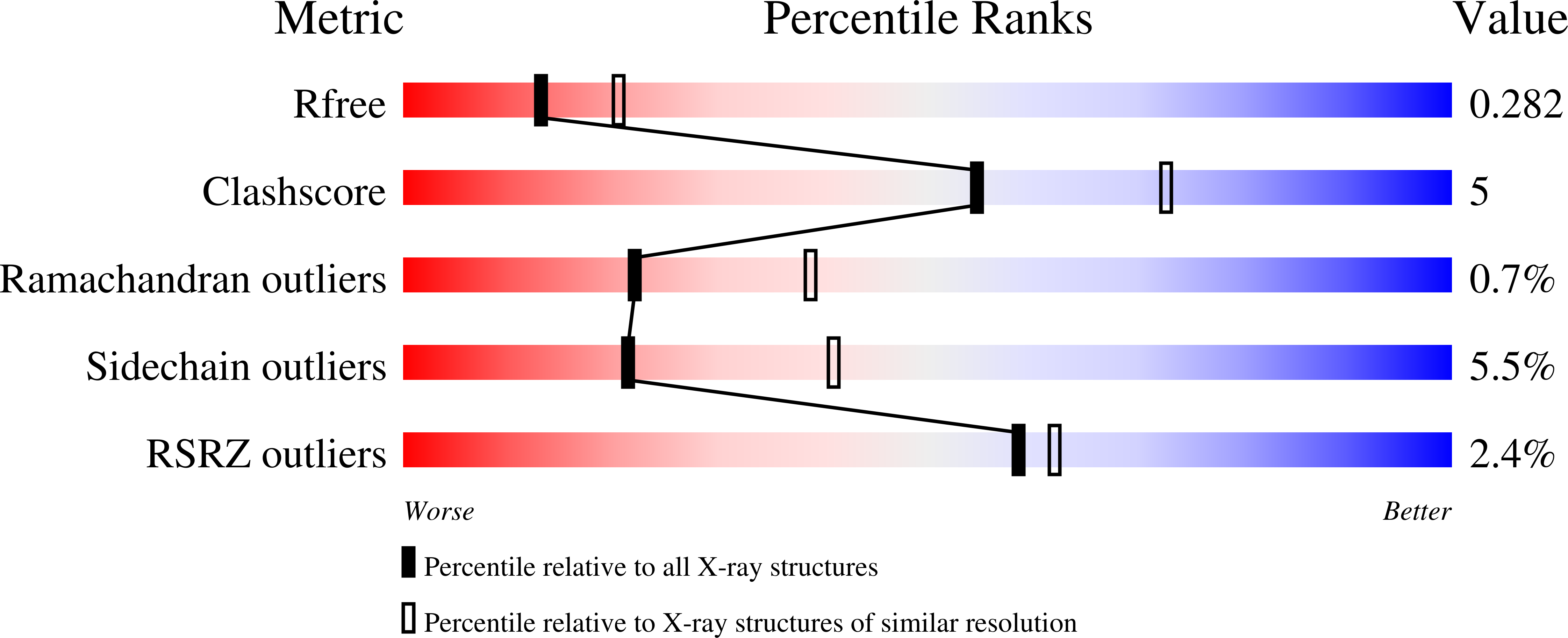Crystal Structure of the Galectin-9 N-terminal Carbohydrate Recognition Domain from Mus musculus Reveals the Basic Mechanism of Carbohydrate Recognition
Nagae, M., Nishi, N., Murata, T., Usui, T., Nakamura, T., Wakatsuki, S., Kato, R.(2006) J Biological Chem 281: 35884-35893
- PubMed: 16990264
- DOI: https://doi.org/10.1074/jbc.M606648200
- Primary Citation of Related Structures:
2D6K, 2D6L, 2D6M, 2D6N, 2D6O, 2D6P - PubMed Abstract:
The galectins are a family of beta-galactoside-binding animal lectins with a conserved carbohydrate recognition domain (CRD). They have a high affinity for small beta-galactosides, but binding specificity for complex glycoconjugates varies considerably within the family. The ligand recognition is essential for their proper function, and the structures of several galectins have suggested their mechanism of carbohydrate binding. Galectin-9 has two tandem CRDs with a short linker, and we report the crystal structures of mouse galectin-9 N-terminal CRD (NCRD) in the absence and the presence of four ligand complexes. All structures form the same dimer, which is quite different from the canonical 2-fold symmetric dimer seen for galectin-1 and -2. The beta-galactoside recognition mechanism in the galectin-9 NCRD is highly conserved among other galectins. In the apo form structure, water molecules mimic the ligand hydrogen-bond network. The galectin-9 NCRD can bind both N-acetyllactosamine (Galbeta1-4GlcNAc) and T-antigen (Galbeta1-3GalNAc) with the proper location of Arg-64. Moreover, the structure of the N-acetyllactosamine dimer (Galbeta1-4GlcNAcbeta1-3Galbeta1-4GlcNAc) complex shows a unique binding mode of galectin-9. Finally, surface plasmon resonance assay showed that the galectin-9 NCRD forms a homophilic dimer not only in the crystal but also in solution.
Organizational Affiliation:
Structural Biology Research Center, Photon Factory, Institute of Materials Structure Science, High Energy Accelerator Research Organization, Tsukuba, Ibaraki 305-0801, Japan.


















